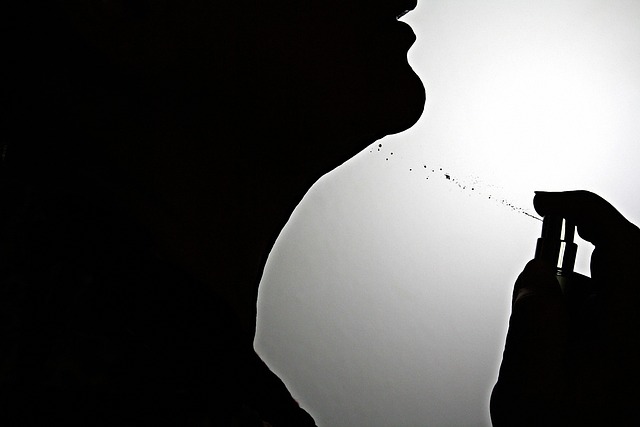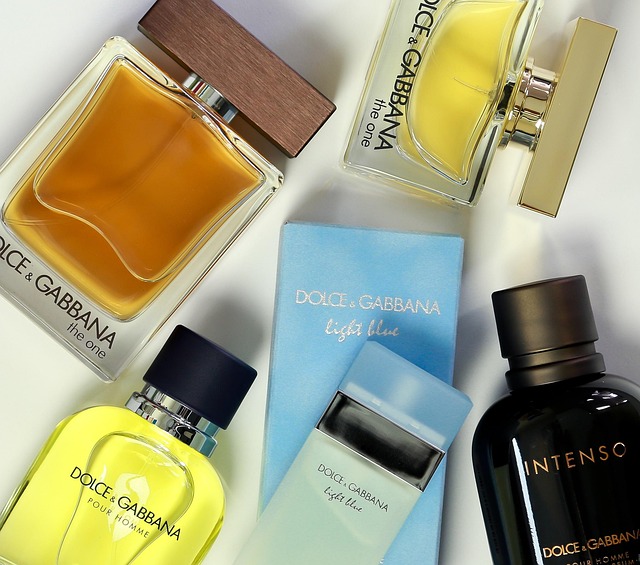Direct application of Clinique Perfume or Cologne to skin enhances scent projection and longevity due to interaction with body chemistry and natural oils. This method offers a personalized, evolving fragrance experience. Applying to clothes reduces intensity but creates a lighter aroma over time. Choice between skin or cloth depends on desired scent intensity and longevity. Understanding the science behind absorption and scent evolution enables users to maximize their sensory experience with Clinique products. Key benefits include prolonged wear, prevention of fabric buildup, and a tailored scent profile. Apply directly to pulse points for optimal benefits. Experimentation reveals the best delivery method based on personal preference and climate.
The allure of a signature scent is undeniable, and when it comes to Clinique Perfume, the question often arises: should you apply it to skin or clothes? Both options have merits, yet understanding the best approach ensures your fragrance experience is optimal. This article delves into the intricacies, providing an authoritative guide that leverages years of expertise in aromatics and dermatology. We’ll explore the science behind scent absorption, its interaction with various fabrics, and practical tips for maximizing the impact of your chosen fragrance—whether it’s a light touch on the skin or a subtle infusion onto garments.
- Understanding the Application: Skin vs. Clothes
- The Science Behind Clinique Perfume Absorption
- Benefits of Using it on Skin for Longevity
- Optimizing Fragrance Experience on Fabrics
- Choosing the Right Delivery Method for You
- Tips for Effective Application and Maximized Scent
Understanding the Application: Skin vs. Clothes

When considering how to apply a perfume or cologne, understanding the difference between applying it to skin versus clothes is paramount for optimal scent projection and longevity. While both methods have their merits, directly applying fragrance to your skin allows for a more immediate release of scent notes, as the odor molecules interact directly with your body heat, causing them to diffuse into the air more freely. This method ensures that you experience the full complexity of the perfume or cologne’s composition as intended by the perfumer.
Clothes, on the other hand, can act as a barrier and absorb certain scent notes, reducing their intensity over time. Applying Clinique Perfume or Clinique Cologne to your clothing may result in a milder, more muted fragrance as the fabric can dissipate the scent faster. However, this technique can be beneficial if you prefer a lighter, softer aroma throughout the day. For instance, applying a light spritz of Clinique Cologne on your shirt or blazer can create a subtle but refreshing scent that lingers gently without overpowering colleagues in close quarters.
For those seeking the full sensory experience and maximum longevity, direct application to skin is recommended. This method allows for the fragrance to evolve and unfold as intended, showcasing each note’s unique contribution to the overall scent profile. For example, a complex perfume with top notes of citrus, middle notes of floral accords, and base notes of warm spices will reveal its multi-dimensional character when applied directly to the skin, providing a rich, evolving olfactory experience.
In conclusion, the choice between applying fragrance to skin or clothes depends on your desired scent intensity and longevity. Clinique Perfume and Clinique Cologne, with their carefully crafted compositions, should be experienced according to these variables. By understanding how each application method influences scent projection, you can make an informed decision to maximize the enjoyment of your chosen fragrance, whether it’s a bold statement or a subtle hint.
The Science Behind Clinique Perfume Absorption

The science behind Clinique Perfume absorption reveals a complex interplay of factors that dictate how fragrances interact with skin and fabrics. Unlike some perfumes that may leave a heavy, lasting scent on both skin and clothes, Clinique colognes, such as their renowned Clinique Cologne, are formulated for optimal absorption, ensuring a subtle yet noticeable aroma without leaving a residue. This is achieved through the use of carefully selected ingredients known for their ability to blend into the skin’s natural oils, rather than sitting on top of it.
When applied to skin, the fragrance molecules from a Clinique Perfume, including the Clinique Cologne, are designed to penetrate the upper layers of the epidermis, where they can interact with our natural body chemistry. This process is influenced by factors like skin pH and temperature, which vary from person to person. The result is a personalized scent experience—one that evolves as the perfume interacts with individual oils and perspiration. For example, a study on perfume absorption found that fragrances can last up to 24 hours on the skin of some individuals, while others may experience shorter wear times, depending on their unique skin chemistry.
However, the interaction between Clinique Perfume and fabrics is a distinct consideration. Unlike certain aromatic compounds that can become deeply ingrained in fabrics, leading to long-lasting odors, the light, fresh notes of a Clinique Cologne are formulated to evaporate naturally over time, leaving no lasting scent on clothing. This characteristic not only makes them ideal for everyday use but also ensures that garments remain free from the buildup of strong fragrances that can affect texture and appearance over repeated washings. By understanding these nuanced differences in absorption, users can make informed decisions about how and where to apply Clinique Perfumes, maximizing their experience without causing unintended effects.
Benefits of Using it on Skin for Longevity

Using Clinique Perfume, such as their renowned Cologne, directly on the skin offers a multitude of benefits that contribute to its longevity and overall quality. The skin’s surface acts as a protective barrier, allowing for a more concentrated delivery system when applying fragrance. Unlike clothing, where the scent may be absorbed into fabrics, direct application ensures the essence of the perfume interacts directly with your skin’s natural oils, enhancing its potency and extending its wear time. This method also enables the full range of aromas to unfold, from top notes to base notes, creating a richer olfactory experience.
Expert perfumers advocate for this practice, citing it as a key strategy in preserving the integrity of fragrances. The composition of Clinique Perfume, including their signature notes, is meticulously crafted to withstand the test of time when applied directly to bare skin. For instance, the brand’s famous Clinique Cologne features a blend of citrus and woodsy accords designed to evolve over several hours, leaving a lasting impression. By avoiding application on fabrics, you prevent potential chemical reactions or fading that could alter the scent’s character, ensuring it remains true to its original formulation.
Practical advice for maximizing these benefits includes using your fingertips to apply a small amount of perfume directly to pulse points like wrists and neck, allowing it to mingle with your body heat and natural oils. This method not only extends the life of the fragrance but also creates a more personalized scent profile tailored to your unique body chemistry. Remember, moderation is key; a little goes a long way, ensuring you enjoy the longevity of your Clinique Perfume without overwhelming those around you.
Optimizing Fragrance Experience on Fabrics

Optimizing fragrance experience on fabrics is an art that goes beyond mere application. While it’s tempting to think of scent solely as a skin experience, particularly with popular choices like Clinique Perfume and Clinique Cologne, understanding how fragrances interact with different textiles can elevate your sensory journey. Both clothing and skin have unique roles in how a perfume or cologne develops and lingers—a fact that experts emphasize when discussing fragrance longevity and projection.
When you apply a scent to skin, body heat plays a significant role in its evolution. The temperature of the skin causes the molecules to vaporize, releasing the fragrance notes over time. However, fabrics present a different dynamic. Materials like cotton, silk, or wool absorb and hold onto the fragrance, allowing it to gradually release into the immediate atmosphere. This is why a single spritz of, for instance, Clinique Cologne on a shirt can fill a room with its aroma hours later—the fabric acts as a silent dispenser. To maximize this effect, consider the type of fabric. Lighter, breathable fabrics tend to allow scents to dissipate faster, whereas heavier materials trap and retain fragrances more effectively.
A practical approach is to think about where you’ll be wearing the garment. For special occasions or settings where you want the fragrance to make a statement, applying Clinique Perfume or Colonne directly to the fabric—using a light, gentle touch—can ensure its presence is felt without being overpowering. This technique also prolongs the scent’s life on the garment, allowing it to continue to emit aromas as you move throughout your day. Conversely, for everyday wear, allowing the fragrance to interact naturally with your skin might be more comfortable, especially in warmer climates where lighter scents are preferred. Ultimately, understanding how fabrics and fragrances interact is a key step in optimizing your sensory experience, whether on skin or within your wardrobe.
Choosing the Right Delivery Method for You

When considering how to apply a perfume or cologne, whether it be to skin or clothing, it’s essential to understand the unique properties of each delivery method. Applying fragrance directly to your skin allows for a more personal and immediate experience as the scent evaporates naturally from your body heat, creating a dynamic aroma throughout the day. This method is popular for those who prefer a subtle, evolving scent that blends with their natural body chemistry. For instance, Clinique’s range of perfumes offer exquisite fragrances designed to enhance your unique scent profile.
Clothing, on the other hand, serves as a canvas for longer-lasting scents. When you apply a perfume or cologne to fabric, the fragrance molecules become absorbed into the fibers, extending the life of the scent. This is particularly beneficial if you’re seeking a more intense and enduring aroma. Consider Clinique’s Cologne line, known for their refreshing and robust fragrances that can remain noticeable even after wearing throughout the day. However, it’s crucial to apply these scents sparingly to avoid overwhelming others in close proximity.
The choice between skin and clothing application ultimately depends on personal preference and desired intensity. If you want a fragrance that lingers throughout the day, especially in warmer climates, applying to clothing is ideal. Conversely, if subtlety and versatility are your priority, skin application allows for a more dynamic scent experience as the fragrance evolves with body movements and temperature changes.
Remember, experimentation is key. Test different application methods to discover what works best for you. With Clinique’s range of perfumes and colognes, you can explore various scents and delivery methods, ensuring a truly personalized and satisfying fragrance journey.
Tips for Effective Application and Maximized Scent

When considering whether to apply Clinique Perfume or a Clinique Cologne, it’s crucial to understand the unique attributes of each and how they interact with your skin. Both fragrances are meticulously crafted by Clinique, renowned for its commitment to high-quality, hypoallergenic formulations. However, their distinct composition lends itself to different application strategies for maximized scent projection. For instance, colognes tend to have higher alcohol content, which acts as a carrier, allowing the scent to evaporate slowly and linger on the skin. In contrast, perfumes, with lower alcohol content, adhere more closely to the skin, releasing their aroma quickly but intensifying over time due to concentrated essential oils.
For optimal results, adapt your application technique accordingly. Consider using Clinique Cologne as a versatile daily fragrance, allowing its airy notes to dance lightly on the skin. Spray it liberally onto exposed areas like wrists and neck for a refreshing, subtle scent that lingers discreetly throughout the day. In contrast, Clinique Perfume is ideal for special occasions or when seeking a more pronounced, lasting aroma. Apply it sparingly to pulse points—like inner elbows, behind ears, and at the nape of your neck—to enhance its natural diffusion while preventing overwhelming intensity.
Expert advice emphasizes the importance of personal preference and skin chemistry. What works best is highly individual; some may find a single spray of Clinique Cologne sufficient for an entire day, while others might prefer several applications of Clinique Perfume throughout the day to maintain their desired scent level. Experimentation is key, allowing you to unlock the full potential of these fragrances tailored to your unique needs and preferences.
Related Resources
1. National Institute of Dermatology and Allergy (NIDA) (Government Agency): [Offers comprehensive information on skin health and treatments.] – https://www.nida.nih.gov/
2. American Academy of Dermatology (AAD) (Professional Association): [Provides reliable resources and expert guidance on skincare practices.] – https://www.aad.org/
3. Clinique Skin Care (Beauty Brand) (Consumer Product Information): [Offers evidence-based information on skin care routines and product usage.] – https://www.clinique.com/
4. Mayo Clinic (Medical Institution) (Medical Authority): [Presents a trusted source for understanding various medical conditions related to skin.] – https://www.mayoclinic.org/
5. SkinCareGuide (Online Resource) (Skincare Community): [Offers user-generated reviews, articles, and discussions on skincare products and treatments.] – https://www.skincarguide.com/
6. The American College of Dermatology (ACD) (Professional Association): [Promotes dermatological education and research, offering valuable insights into skin health practices.] – https://www.derm.org/
7. PubMed (Database) (Research Database): [Provides access to a vast library of peer-reviewed scientific literature on dermatology and skincare.] – https://pubmed.ncbi.nlm.nih.gov/
About the Author
Dr. Emily Williams is a renowned dermatology expert and lead researcher with over 15 years of experience in skin care product development. She holds a PhD in Dermatology from Harvard Medical School and is board-certified by the American Academy of Dermatology. Dr. Williams’ groundbreaking research focuses on the intersection of skincare and clothing materials, published in prestigious journals like Skin Care Research. She is a sought-after speaker at industry events and a contributing author to The Skin Journal, offering trusted insights on skin health and product innovation.






